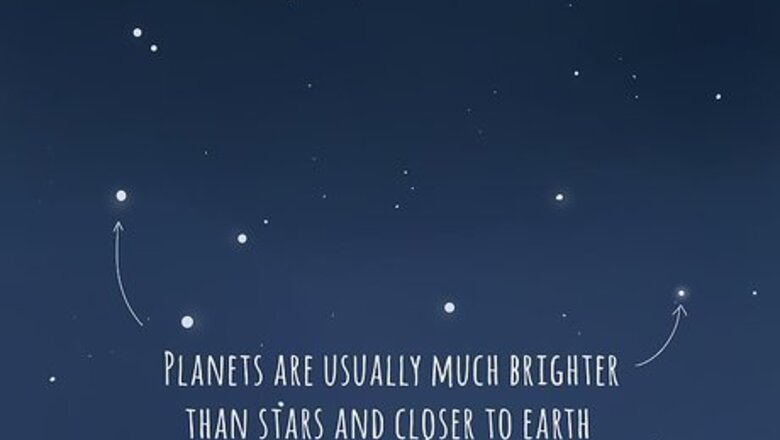
views
Knowing What to Look For
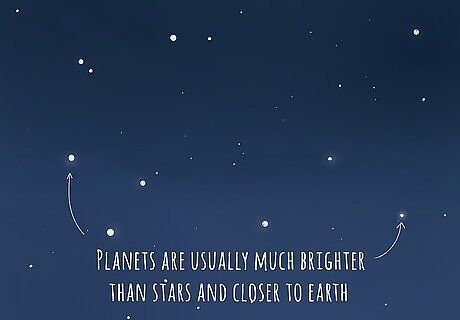
Distinguish stars from planets. Planets are usually much brighter than stars. They are closer to earth so they begin to look more like a disk, rather than a tiny dot.
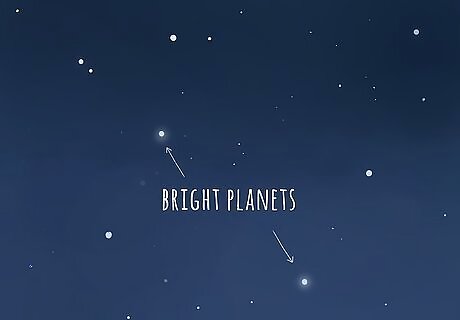
Look for the bright planets. Although some of the planets may be in their apparition period, they may be harder to see if they aren’t one of the brighter planets. Jupiter and Saturn will always be the easiest to see.
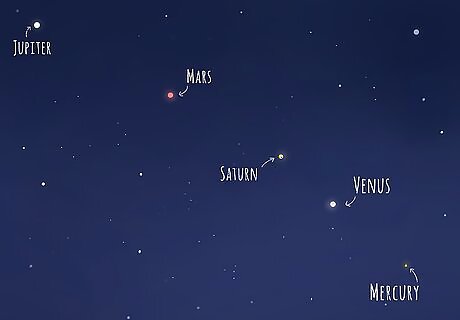
Know what color you’re looking for. Each planet reflects the light of the sun differently. Know what color you’re looking for in the night sky. Mercury: this planet twinkles, flashing a bright yellow color. Venus: Venus is often mistaken for a UFO because it is large and silver. Mars: this planet is a reddish color. Jupiter: Jupiter glows white throughout the night. It is the second brightest point of light in the night sky. Saturn: a smaller planet that is yellowish-white in color.
Looking in the Right Spot

Learn how the lights affect the sky. It is easier to see the stars and planets in the night sky if you live in a rural area. If you’re in the city, it will be much more difficult to see them because of light pollution. Try to find a spot away from stray light that shines off of buildings.

Look in the right part of the sky. The planets are rarely near one another in the night sky. Knowing where to see them is very important. A great way to find them is to locate them when they appear as part of a constellation. Mercury: Mercury will be visible near the Sun. You’ll lose it in the Sun’s glare for most of the year, but it will return to view in the middle of August. Mars: look low in the morning sky, Mars moves eastward. Jupiter: Jupiter is always located very far away from the sun. Saturn: look low in the Libra constellation to see this bright planet.
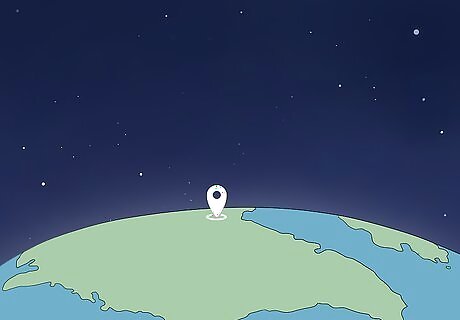
Take your position on Earth into consideration. The planets may have an apparition period but may earlier in the eastern hemisphere and later in the night in the western hemisphere. When you look at the apparition periods, take into consideration what part of the earth you’re on.
Looking at the Right Time
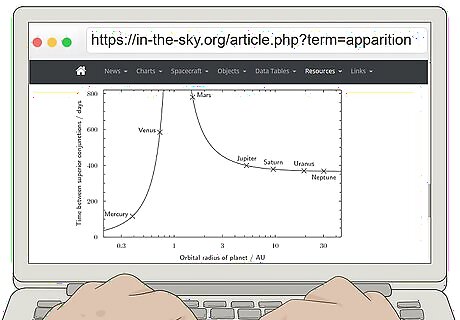
Find your planet’s apparition period. The apparition period is the time that your planet is visible. It can last anywhere from a few weeks to almost two years. You can look these up in most astronomy catalogues to figure out when your planets are visible.

Know what time to look. Most of the planets are most visible as the sky gets dark (dusk) or as the sky begins to brighten again (dawn). However, looking for them in the night sky is also possible. You have to look very late at night, when it is incredibly dark out.
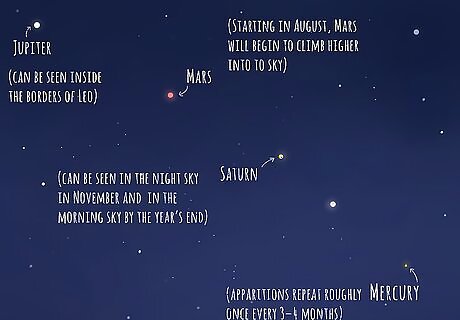
Know when your planets are visible each night. Combine their apparition period with the time that they are most visible to determine when will be the best time to see the planet you’re looking for. Mercury: this planet is visible multiple times a year. This year, it will still be visible in September and December. Mars: the early morning sky will showcase Mars. Starting in August, Mars will begin to climb higher into to sky and continue through the rest of the year. It will become brighter as it climbs. Jupiter: pre-dawn skies are the best time to see Jupiter. It will appear in the 2015 sky in mid-September and continue for months inside the borders of Leo. Saturn: look in the evening twilight sky for Saturn. Saturn will appear in the night sky in November and will be visible in the morning sky by the year’s end.




















Comments
0 comment